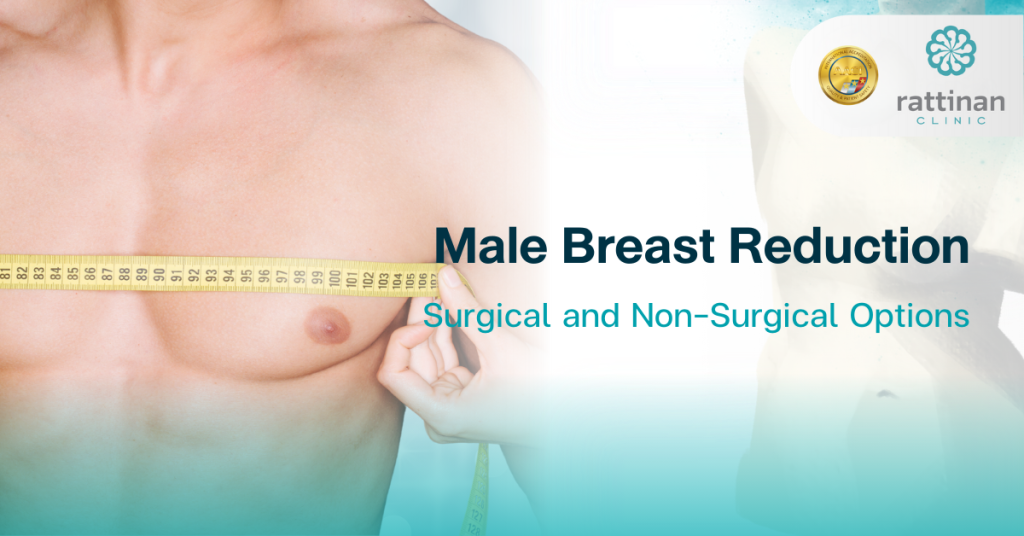Male breast enlargement, also known as gynecomastia, is more common than many people think. It can cause both physical discomfort and emotional stress, often affecting confidence and self-image.
Fortunately, there are effective treatment options available — both surgical and non-surgical — to help men regain a flatter, more masculine chest. In this blog, we’ll explore everything you need to know about male breast reduction.
Male breast reduction refers to treatments aimed at reducing enlarged breast tissue in men. Gynecomastia can affect one or both breasts and is often triggered by:
- Hormonal imbalances (low testosterone, high estrogen)
- Medications (e.g., steroids, antidepressants, anti-androgens)
- Substance use (alcohol, marijuana)
- Underlying health conditions (like liver or thyroid disorders)
- Obesity and poor diet
It’s important to distinguish between true gynecomastia (glandular tissue) and pseudogynecomastia (fat accumulation), as treatment strategies differ.
Male Breast Reduction Surgery
When Is Surgery Recommended?
Surgery is typically advised when:
- Gynecomastia is severe or persistent
- Non-surgical treatments have failed
- There’s discomfort or emotional distress
Surgical Techniques
- Liposuction – Removes excess fat via small incisions using a suction cannula.
- Excision – Removes dense glandular tissue or excess skin through a small incision, often around the areola.
- Combination – Frequently used when both fat and glandular tissue need to be addressed.
Recovery Process
- Most surgeries last 1–2 hours and are performed under local or general anesthesia.
- Recovery time is typically 3–7 days for light activities, and 3–4 weeks for strenuous exercise.
- A compression garment is worn to reduce swelling and support the chest.
Risks and Considerations
- Scarring
- Asymmetry
- Nipple sensation changes
- Bruising, swelling, or infection
Male Breast Reduction Without Surgery
Lifestyle Changes
In mild or fat-dominant cases (pseudogynecomastia), non-surgical methods may offer some improvement:
- Exercise: Combining cardio with chest-targeted strength training can help reduce overall body fat and improve chest tone.
- Diet: A clean diet low in sugar, processed foods, and alcohol, and rich in lean protein, vegetables, and whole foods supports fat loss.
- Weight loss: Reducing overall fat mass can flatten the chest if the enlargement is primarily fat-based.
However, it’s important to understand that:
Can exercise cure gynecomastia? Exercise can help reduce fat in the chest area, making it appear flatter in cases of pseudogynecomastia (fat buildup). But if the enlargement is caused by glandular tissue, exercise alone will not shrink it. Once glandular tissue has developed, it tends to remain the same size regardless of how lean you become. In such cases, surgery is the only effective solution.
Limitations of Non-Surgical Treatments
- Best suited for mild or early-stage cases
- Ineffective for long-standing, fibrous, or glandular gynecomastia
- True gynecomastia (glandular tissue) typically requires surgical removal for permanent results
Choosing the Right Treatment
The best treatment depends on the cause and severity of your gynecomastia. Consulting our qualified healthcare provider or plastic surgeon is key to determining whether lifestyle changes, medication, or surgery is the right path for you.
Book Free Consultation
Conclusion
Male breast reduction can significantly improve physical appearance and emotional well-being. Whether you’re leaning toward surgery or hoping for natural improvements, the first step is understanding your options. Take control of your health and confidence — effective treatment is within reach.


Our Expert Medical Contributors are licensed doctors and specialists who ensure every article is accurate, trustworthy, and easy to understand. Guided by our commitment to safety, care, and confidence, they provide expert insights to help patients make informed decisions. At Rattinan, we believe that knowledge is the first step to transformation.